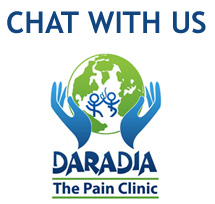Dangerous Headaches
Headaches which are dangerous
Not all headaches are dangerous. We must know which headaches are dangerous and which are not. These dangerous signals, signs, and symptoms are called red flags of headaches disorders. Let us see who are these!
RED FLAGS OF HEADACHE
In our day-to-day practice, we encounter a lot of patients complaining of headaches. The most common types are tension-type headache, migraine (with or without aura), medication overuse headache, and cluster headache. Headache can present with certain features that needs urgent evaluation. These features are termed as Red Flags. Neurology National and Regional guidelines had formulated pneumonic SNOOP in 2003 which has been updated to
SNNOOP10 in 2019. We will discuss below.
S Systemic features including fever – Systemic symptoms included are photophobia, phonophobia, nausea, vomiting, altered consciousness, nuchal rigidity, and seizures.
DD- Bacterial meningitis -2-5 yrs – Hemophilus influenzae
Older children – Neisseria meningitides
>40 years – Streptococcus pneumoniae
Brain abscess – Headache with drowsiness, confusion, focal neurological deficits, seizures
Viral and bacterial encephalitis
HIV
Lyme disease
Fungal and protozoal infections Nonvascular intracranial disorder Pheochromocytoma
Carcinoid syndrome
N Neoplasm in history – Headache – Bilateral, dull, aching, and rarely throbbing, worse on the side ipsilateral to a tumor and increases ICP from Valsvalva’s maneuver and exertion accompanied by nausea and vomiting
DD – Infratentorial tumors more common
Pituitary tumor Craniopharyngioma CP angle tumor
Metastasis – Lung cancer, Breast cancer, Malignant Melanoma
N Neurologic deficit /dysfunction (including decreased consciousness)
DD – Headaches related to vascular, non-vascular intracranial disorders, brain abscess,es and other infections.
Migraine with aura
Ischemic Stroke (posterior cerebral circulation is commonly involved)
O Onset of Headache is sudden /abrupt
DD- Subarachnoid hemorrhage – ruptured Berry aneurysm – Bilateral headache becomes severe in a very brief interval, transient loss of consciousness, bleeding, nausea, vomiting, meningismus, focal neurologic symptoms, seizures
Arteriovenous malformation
O Older age (after 50 years)
DD -Tension-type Headache, Migraine
Giant cell arteritis – Headache is throbbing and continuous, more on chewing, focally worse in the temporal region and localized to scalp vessels, associated with weight loss, night sweats, low-grade fever, jaw claudication, and aching of joints
Polyarteritis nodosa Kawasaki disease Wegener’s granulomatosis Microscopic polyarteritis Churg Strauss syndrome
P Pattern changes/recent onset
DD – Neoplasms
Headaches attributed to vascular, non-vascular intracranial disorders
P Positional Headache
DD – Idiopathic Intracranial hypertension – Pseudotumor cerebri/benign
intracranial hypertension – Headache with transient episodes of visual loss, diplopia from 6th cranial nerve palsies, papilloedema, pulse synchronous stimuli, nausea, and neck stiffness.
Intracranial hypotension
P Precipitated by sneezing, coughing, or exercise
DD – Primary Cough Headache
Primary exertional headache
Posterior fossa malformation
Chiari malformation
P Papilloedema
DD – Glaucoma
Neoplasms
Nonvascular intracranial disorder
Intracranial hypertension
P Progressive headache and atypical presentation DD – Neoplasm
Nonvascular intracranial disorder
P Pregnancy / Puerperium
DD – Postdural Puncture Headache
Hypertension related disorders(Eg. Preeclampsia) Cerebral sinus thrombosis
Hypothyroidism
Anemia
Diabetes
P Painful eye with autonomic features
DD – Posterior cranial fossa tumors Tolosa Hunt syndrome Cavernous sinus thrombosis
Ophthalmic causes-Trigeminal Autonomic Cephalalgia
P The post-traumatic onset of Headache
DD- Acute and chronic post-traumatic headache
Subdural hematoma
- P Pathology of the immune system – HIV
- P Painkiller overuse / new medicine used for treatment
DD- Medication overuse headache
References:
Diagnosis, assessment, and management of headache-Manuela Fonteasso
Diagnosing headache – American Society of Neurology. Neurology volume 92, Number 3
Pain management – Waldman 2 nd edition


